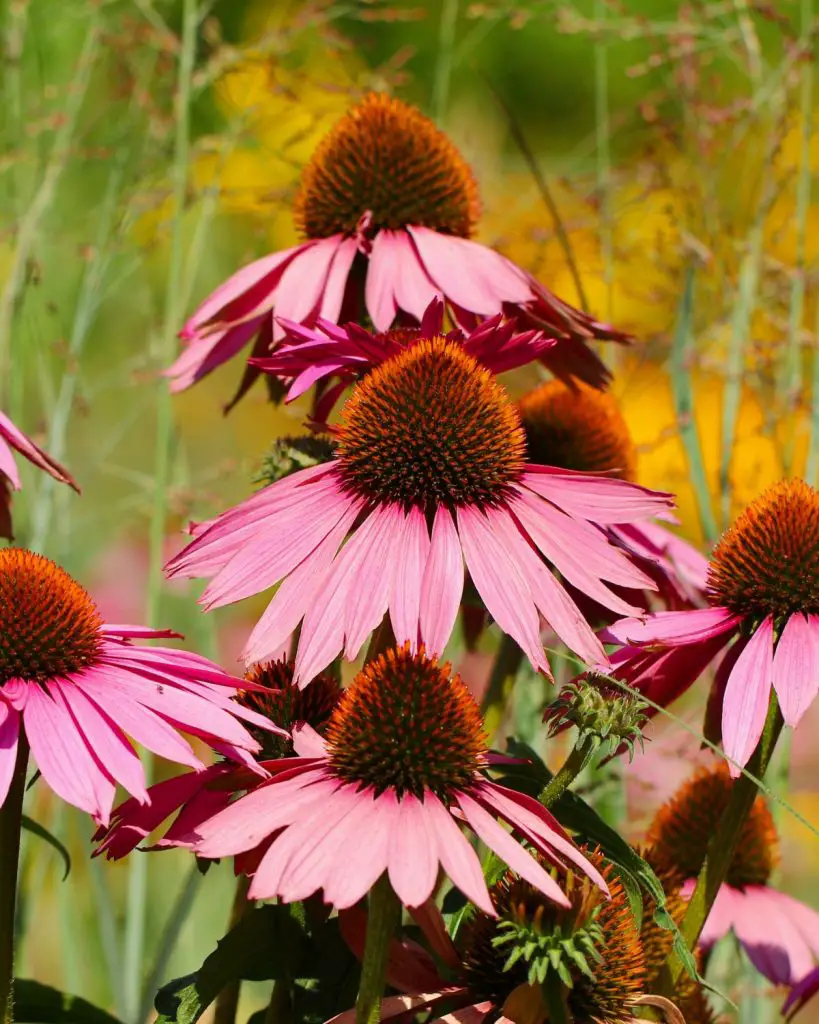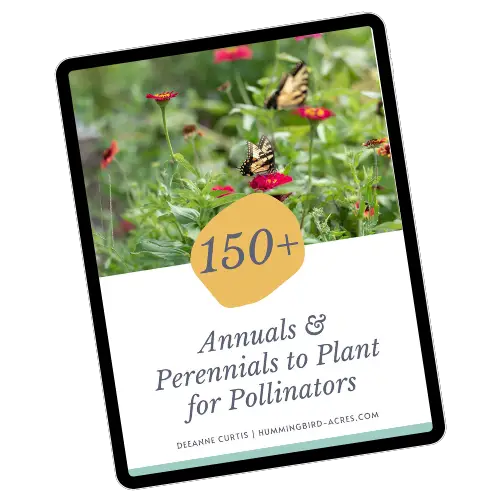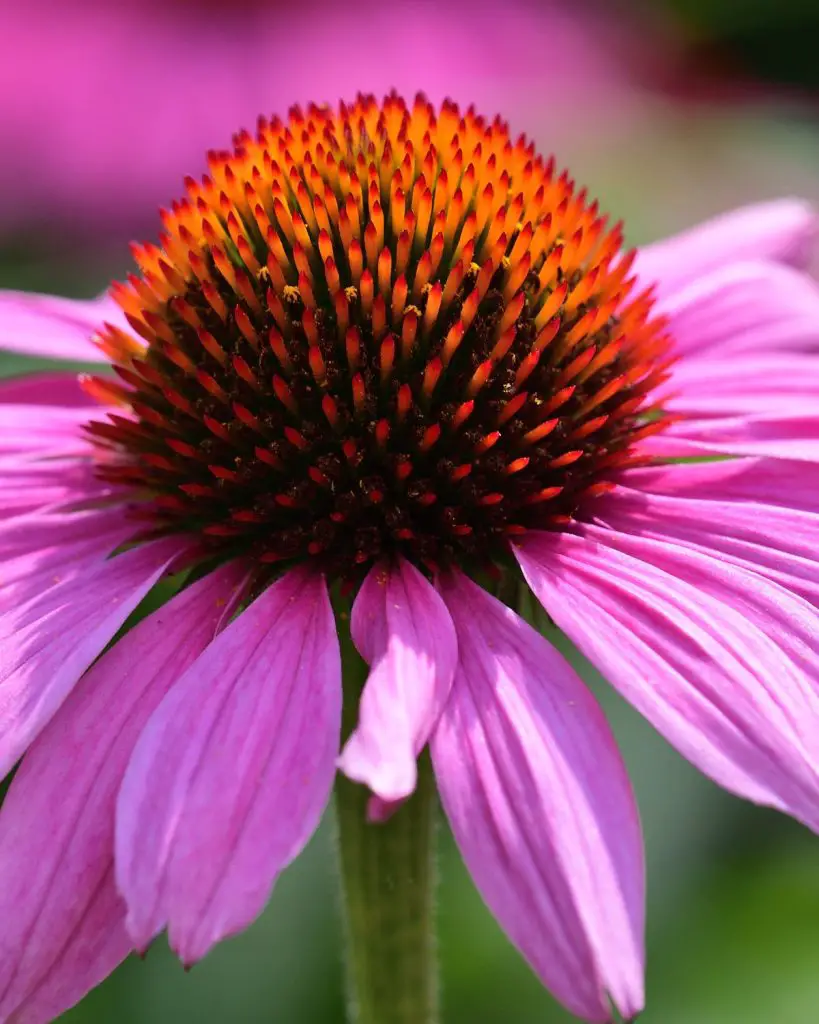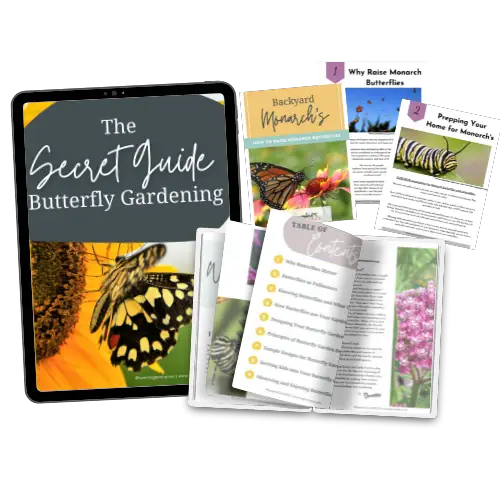Grow Coneflower to Attract Butterflies to Your Garden!
Bringing beauty, texture, and vivid colors to your garden can have a transformative effect. But what if you could not only spruce up the look of your garden but also attract beneficial wildlife such as butterflies? An easy way to do this is by growing coneflower! This species has captivating daisy-like blooms that come in vibrant hues of pink, white or purple. They’re low maintenance flowers that require minimal effort – meaning it’s perfect for beginner gardeners who don’t have time or energy to manage their gardens intensively. Plus, planting these beauties helps create habitats for pollinators like bees and butterflies while adding stunning visual elements to any outdoor space! Read on to learn how you can bring home a few coneflowers today!
Disclosure: As an Amazon affiliate, I earn from qualifying purchases at no extra cost to you. My blog contains other affiliate links as well for your convenience. To learn more, you may read my Disclosure Policy. Thank you for supporting my blog!
What is coneflower and how it can benefit your garden
Coneflowers, also known as Echinacea, are a beautiful and beneficial addition to any garden. These perennials are well-loved for their brightly colored, daisy-like blooms that add a pop of color to any landscape. But coneflowers offer more than just aesthetic appeal. They also have medicinal properties and attract pollinators such as bees and butterflies. They are easy to grow and maintain, making them a perfect choice for novice gardeners or those with limited time for gardening. With their striking appearance and numerous benefits, coneflowers are a must-have for any garden.

Planting and caring for coneflower – soil conditions, when to water, etc.
Caring for coneflowers can be both rewarding and challenging for gardeners. These beautiful and resilient plants can add vibrant colors to any garden, but they are also quite sensitive to their environment. One crucial aspect of caring for coneflowers is to ensure that they have the right soil conditions. These plants prefer well-drained soil that is rich in organic matter. They also need to be watered regularly, but not too often. Over-watering can cause the roots to rot, while under-watering can stress the plant. To ensure your coneflowers thrive, it’s important to stay vigilant and keep a close eye on their soil conditions and watering needs. With a little patience and attention, you can enjoy a stunning display of coneflowers in your garden all season long.

Grab my free
150 Plants for Pollinators
Plant These to Attract Butterflies and Pollinators to Your Garden!
Enter your name & email so we can send you your FREE Guide.
[convertkit form=5600487]
How coneflower attracts butterflies to your garden
If you’re a fan of vibrant butterfly sightings in your garden, then consider planting coneflowers. These colorful and daisy-like flowers are a favorite among butterflies, particularly the Monarch species. They are drawn to the nectar produced by the coneflower’s individual flowers, which are arranged on a central cone-shaped disk. The bright colors of the petals, which can range from pink and purple to yellow and red, also serve as a visual attraction for butterflies. By including coneflowers in your garden, you not only add a beautiful and low-maintenance perennial to your landscape but also help support the local butterfly population.
Different varieties of coneflower and how to best utilize them in your garden design
Coneflowers are a popular choice for any garden because of their hardy nature and striking blooms. There are various varieties of coneflowers available, each with their unique features and colors. For instance, the ‘Hot Papaya’ variety boasts vibrant orange-red blooms while the ‘Green Envy’ cultivar has green petals surrounding a brown cone. The ‘Magnus’ variety has a classic purple hue and can grow tall, making it great for adding height to a garden design. When it comes to utilizing coneflowers, they are perfect for creating informal and natural-looking gardens, as well as for attracting pollinators. They also work well with other low maintenance perennials like salvia and black-eyed Susans. By incorporating different varieties of coneflowers into your garden design, you can add a pop of color and interest while creating a welcoming and eco-friendly space.

Tips for propagating coneflower – dividing plants, saving seeds, etc.
Coneflowers are among the most beloved flowering plants for a good reason – they are hardy, easy to care for, and produce gorgeous blooms that attract pollinators from near and far. If you’re a coneflower enthusiast, you might want to propagate your plants to multiply your collection or share them with friends. There are several ways to do this, including dividing the plants, taking cuttings, or saving seeds. Each method has its own benefits and challenges, so it’s important to understand the process before you start. By following a few simple tips, you can successfully propagate your coneflowers and enjoy their beauty for years to come.

Get our
Secret Guide to Butterfly Gardening
Everything you need to start and maintain a vibrant and colorful butterfly garden.
Keeping pests away from your coneflowers without using chemicals
Coneflowers are a popular choice for gardens due to their vibrant colors and ability to attract pollinators. However, pesky insects and animals can often ruin the beauty of these flowers. Luckily, there are ways to keep pests away without having to resort to harmful chemicals. One method is to plant companion plants such as marigolds or garlic around the coneflowers. These plants naturally repel pests and can protect your flowers. Creating a physical barrier, such as a fence or netting, can also keep larger pests like deer or rabbits from snacking on your plants. Another option is to manually remove any pests that you see, such as slugs or caterpillars. With these simple and natural methods, you can enjoy your coneflowers without worrying about harmful chemicals.
It is easy to see why coneflower is such a popular addition to gardens around the world. Whether you are looking for a showstopper or simply want to attract butterflies and other pollinators, coneflower is an ideal choice. With proper care and attention, growing coneflower can be a rewarding experience. If cared for properly, coneflowers can bloom through early autumn, providing you with a beautiful display full of colorful blossoms throughout the summer months. For those looking determine the best way to utilize coneflowers in their garden design, there are several varieties that offer different sized and colored flowers which will help create an attractive display from season to season. Lastly, by utilizing techniques such as dividing plants or saving seeds, propagating coneflower doesn’t have to be an intimidating task. With all this in mind it becomes clear that with its impressive durability as well as its ability to bring natural beauty into your landscape; coneflower deserves our admiration!

